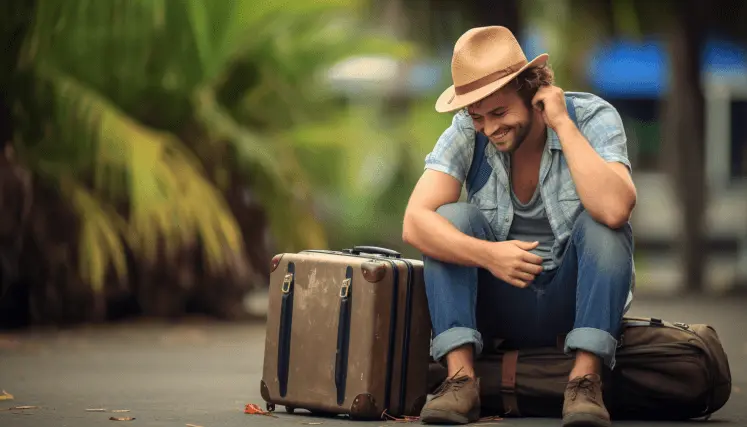In your social media stream, do you see a lot of happy people that are either at the beach or on top of a mountain that is beautiful? It's possible that you're thinking about where you'll go next considering that travel is at the top of many people's to-do lists. Perhaps it is time to cash in your vacation days if you are able to achieve your financial objectives for this year, which include traveling.
The process of planning a vacation may seem to be a lot of effort; however, the following advice from seasoned travelers will make the process much simpler for you. Here are eight methods that can help you plan a trip that is favorable to your wallet.
1. List your dream locations and choose your adventure

What's the first step in organizing a trip? Selecting a destination."Are you searching for a romantic retreat?" inquires Fred Hoffman, creator of The True Wilderness and frequent traveler. A trip that's perfect for the family? or a journey filled with adventure?” He advises thinking about the sort of journey you want to take. This will assist you in choosing a spot.
The blogger Eva Keller of Discovering Hidden Gems suggests making a bucket list for your dream trip. "Every time you sit down to plan a vacation, you'll have a good starting point if you have an idea of where you want to go," says Keller. She has more than simply places on her bucket list for vacations. Along with events like wine tastings and river cruises, it also includes a list of civilizations she'd want to visit.
Your trip planning may be set to go when you have a vision in mind, along with maybe a mood board.
2. Plan your budget
Your next vacation's tone and spending cap might be determined by your travel budget. Think on how much you're willing to spend on activities, meals, lodging, and transportation. Scheduling a trip abroad is a smart option if you have more money, according to Hoffman. "Think about going on a camping or road trip instead if you're trying to save money."
I agree, as does Rebecca Gade Sawicki of the vegan travel site Veggies Abroad. She advises, "Always be aware of your budget and make sure it's central to your planning." If each person's budget is less than $1,000, she advises avoiding opulent venues and looking instead for more reasonably priced choices.
You may begin saving for your trip once you have a budget in mind. Hoffman advises travelers to "check for discounts and deals on travel websites before booking anything." You might also use the following inquiries to assist in generating a vacation budget:
- How much can I afford to spend in total?
- How flexible is my travel timeline?
- Are there more affordable locations offering similar experiences?
- Do I have access to discounts I can take advantage of?
For more travel budget tips, check out these traveling on a budget and budget-friendly family vacation planning guides.
3. Check your calendar and research dates
With a location and budget in mind, you can schedule dates for your vacation. The price of travel could vary depending on the month and even the day of the week.
“If you’re flexible with your dates, you may be able to save money by traveling during the offseason,” Hoffman says.
For example, beaches and amusement parks can be especially busy during the summer when kids are out of school. And many folks plan trips around holidays like Memorial Day and Thanksgiving. These high-traffic seasons can make prices skyrocket. If you’re able to go on vacation while other people are working or in school, you might be able to save money.
4. Book flights and hotels
Once you’ve chosen a date, it’s time to buy flight tickets and consider your accommodations.
When booking your flight, be sure to compare prices between different airlines,” Hoffman recommends. “You may also want to look into flight times and schedules to see what will work best for your trip.”
Gade Sawicki adds that you might be able to adjust your flight locations to lower the cost. “If flying into one airport over another saves you $100, you can spend that money on dinner!” she says.
Once you arrive, where will you want to stay? The type of experience you want might determine the lodging you book. “If you’re traveling on a tight budget, you may want to look into hostels,” Hoffman says. “For a more comfortable trip, you can book a hotel room or vacation home.” He suggests reading reviews and comparing prices before making a reservation.
And if you’re a Venture X cardholder, you could check out the hotels offered in the Premier Collection through Capital One Travel. Enjoy a suite of exclusive benefits with every stay like a $100 experience credit, daily breakfast for two and more.
Budget-friendly tip: Don’t wait until the last minute. Airfare and hotel room prices tend to rise the closer you get to your departure dates. It’s good to do your research early and book ahead of time.
5. Search for deals on activities
While a vacation can be worth the splurge, it doesn’t have to hurt your wallet. You might be able to find discounts and credit card perks to help you save money while traveling.
“Keep in mind that most destinations can be a great vacation on all kinds of budgets,” Keller says. She and her husband have stayed in many types of accommodations—from a tent in Yellowstone National Park to the Waldorf Astoria Beverly Hills. By finding deals and humble lodging, the couple usually spends less than $100 a night. And when they want to splurge, they can tap into the money they’ve saved.
Janelle Cooper, blogger at Joyriding With Jash, sticks to her budget by living like a local. She’s currently living in Mexico, but she’s also called Haiti, Italy, Senegal and South Korea home. “Learning public transportation, eating the local cuisine and avoiding tourist traps can save you hundreds of dollars a month,” she says.
6. Build your ideal itinerary
Now to the fun part—finding everything you want to do, see and eat on your trip. Some research and planning can help you build an itinerary that keeps everyone on the trip happy.
“You can make sure everybody gets to do something they want, whether you’re traveling as a couple, as a family or with friends,” Keller says. She reads tourism blogs and Google search results to make a list of activities and find hidden gems. She also suggests making dining reservations so you don’t miss out on any must-eats.
Gade Sawicki relies on a map to keep track of her plans. “When I find things I don’t want to miss, I pin them on Google Maps,” she explains. “If I end up in one part of the city, I can see if there are things I want to do or eat nearby.”
As you finalize your itinerary, it helps to make dinner reservations and reserve tickets for excursions—like museums or galleriesahead of time. And if you’d rather have someone do the work for you, a travel agent can help with planning and may even offer reduced rates and exclusive perks.
7. Pack your bags
A well-packed suitcase can be a staple of a stress-free vacation. If you’re gazing into your closet and wondering what to bring, consider making a packing list.
“Even the most seasoned travelers can be forgetful, but a packing list can do wonders to ensure you don’t forget anything,” Gade Sawicki says. She recalls a time she forgot to bring her camera and ended up buying a new one in Spain—not an expense she planned for.
It also might help to pack lightly and efficiently. Gade Sawicki jokes that unless you’re going on a formal trip, you can leave the ball gown at home. “We tend to bring more than we need,” she says. She also suggests rolling your clothes to save space. “Using these tips, you can easily fit everything in a carry-on suitcase.”
8. Research local customs
Customs can vary from country to country and even city to city, Cooper says. “As an expat and digital nomad, I am responsible for the impact I have on the communities I visit.”
Cooper recommends researching the way of life where you’re traveling, including how to tip and what to wear. “Conscious travel is the best kind of travel,” she shares. “It’s the only way to preserve the beauty of the places we love to visit.”
If you’re able, it helps to get to know local phrases, etiquette and environmental practices. And remember to respect local residents and their neighborhoods you’re a visitor in their home, after all.
